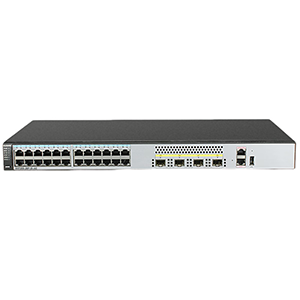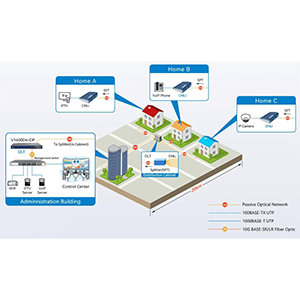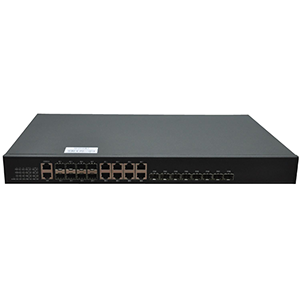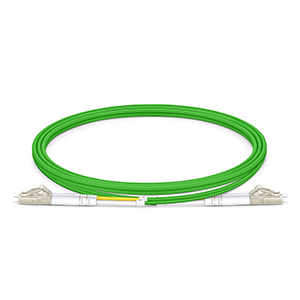As an important part of network equipment, aggregation switches play an important role in modern enterprise networks. So, what is an aggregation switch? What are its functions and advantages? What issues should be paid attention to when purchasing and configuring? This article will introduce the aggregation switch in detail from multiple angles to help everyone better understand and use this device.
Introduction to what is an aggregation switch
An aggregation switch is an advanced switch, also known as a core switch. It is a device that aggregates multiple physical ports into one logical port, providing higher bandwidth and better network performance. Aggregation switches are often used to connect other switches and routers to provide more efficient data transmission and more reliable network connections.
Aggregation switches have high performance and throughput and can handle large amounts of data transmission and exchange. It usually uses high-speed transmission interfaces, such as optical fiber or Ethernet interfaces, to achieve high-speed data transmission.
It can realize the connection of multiple access layer devices, allowing multiple terminal devices to access the network at the same time. At the same time, aggregation switches can also filter and forward data to ensure network security and stability.
Functions of aggregation switches
1、Aggregation and connection of multiple lower-level devices: Aggregation switches can connect and aggregate multiple lower-level switches or network devices. It aggregates traffic from these devices to a centralized point through multiple ports and high-bandwidth capabilities.
2、Provide high-bandwidth connections: Aggregation switches usually have higher bandwidth capabilities to meet the needs of traffic aggregation from multiple lower-level devices. It supports high-speed data transmission and processing by providing high-bandwidth connections.
3、Network traffic management: The aggregation switch can manage and control the traffic between lower-level devices connected to it. It can implement policies such as traffic scheduling, priority settings, and traffic restrictions to ensure the balance and optimization of network traffic.
4、Redundancy and high reliability: Aggregation switches usually have redundant and high-reliability designs to ensure the stability and availability of network connections. They may support features such as redundant power supplies, redundant links and hot-swappable modules to prevent single points of failure.
5、Scalability and manageability: Aggregation switches usually have good scalability and can expand the number of ports and bandwidth according to network needs. In addition, they also provide rich network management functions, including remote monitoring, configuration management, fault diagnosis, etc., so that network administrators can manage and maintain the network.
6、Virtualization support: Some aggregation switches also provide virtualization capabilities, allowing physical network resources to be divided into multiple logical networks to meet the needs of different applications or tenants. This virtualization support improves network resource utilization and flexibility.
Advantages of aggregation switches
1、High-speed data processing capabilities: Aggregation switches have high-bandwidth capabilities and can handle large amounts of data traffic in large-scale networks, ensuring fast and efficient data transmission.
2、Simplify the network architecture: By connecting and aggregating multiple lower-level devices, aggregation switches simplify the network architecture and reduce the complexity of management and configuration.
3、Optimize network traffic: The aggregation switch provides traffic management and optimization functions. It can perform traffic scheduling, priority settings and traffic restrictions according to needs to ensure the balance and optimization of network traffic and provide a better user experience.
4、Improve network reliability: Aggregation switches support redundant design and failover functions to prevent single points of failure and provide stable and reliable network connections.
5、Flexible scalability: Aggregation switches have good scalability and can expand the number of ports and bandwidth as needed to adapt to growing network needs.
6、Support virtualization: Some aggregation switches support virtualization technology, which divides physical network resources into multiple logical networks to improve resource utilization and flexibility.
7、Simplified network management: Aggregation switches provide rich network management functions, including remote monitoring, fault diagnosis and configuration management, etc., simplifying network management and maintenance.
Application scenarios of aggregation switches
1、Enterprise data center: In large enterprise data centers, aggregation switches are used to connect and aggregate multiple underlying switches and servers to support high-speed data transmission and traffic aggregation. They provide high-bandwidth connectivity and traffic management capabilities to ensure high performance and reliability of data center networks.
2、Cloud service provider: Cloud service providers need to handle a large amount of network traffic and data transmission, so aggregation switches play an important role in cloud infrastructure. They are used to connect and aggregate multiple servers, storage devices, and network devices to provide high-bandwidth connections and network traffic management to meet the needs of cloud services.
3、Service provider network: In telecommunications and network service provider networks, aggregation switches are used to connect and aggregate network traffic in different regions or branches. They provide high-bandwidth connectivity and traffic management capabilities to support the transmission and optimization of large-scale network traffic, ensuring the performance and reliability of service provider networks.
4、Campus network: In large campus networks, aggregation switches are used to connect and aggregate network traffic from multiple teaching buildings, laboratories, and other campus facilities. They provide high-bandwidth connectivity and traffic management capabilities to support the network communication and data transfer needs of students, faculty and staff.
5、Video surveillance system: Aggregation switches play an important role in video surveillance systems. They are used to connect and aggregate multiple surveillance cameras and surveillance equipment, providing high-bandwidth connectivity and traffic management to support real-time video transmission and processing of surveillance data.
Classification of aggregation switches
Classified by port type:
- Ethernet switch: A switch that supports Ethernet interfaces. Common ones include Gigabit Ethernet and 10 Gigabit Ethernet switches.
- Fiber switch: A switch that supports optical fiber interfaces and is suitable for scenarios with long-distance transmission and high bandwidth requirements.
Classified by degree of management:
- Managed switch: It has rich network management functions and can perform operations such as configuration, monitoring and fault diagnosis.
- Unmanaged switch: simple and easy to use, lacks advanced management functions, and is suitable for small networks or scenarios that do not require complex configuration.
Classified by stacking ability:
- Stackable switch: Supports stacking connections of multiple switches to form a logical switch cluster, providing higher port number and bandwidth, and simplifying management and configuration.
- Non-stackable switch: Unable to perform stacking connections, usually used as an independent switch.
Classification by data center level:
- Core aggregation switch: Located at the core of the data center network, it is used to connect a large number of underlying switches and servers to provide high-capacity and high-performance data transmission.
- Edge aggregation switch: Located at the edge of the data center network, it is used to connect user equipment and underlying switches to provide edge network connections and traffic aggregation.
Classified by supported protocols and functions:
- Multilayer switch: A switch that supports multi-layer protocols (such as network layer and transport layer protocols) and is capable of advanced functions such as routing and distribution.
- Layer 2 switch: A switch that only supports the data link layer and mainly performs basic functions such as data frame forwarding and switching.
Aggregation switch purchasing guide
Determine needs: Be clear about your network needs and goals. Consider expected network traffic, bandwidth needs, number of connections, security requirements, and the potential for future expansion. This will help determine the required switch specifications and capabilities.
Bandwidth and number of ports: Select a switch with sufficient bandwidth and number of ports based on expected data traffic and connectivity needs. Consider existing equipment and future expansion needs to ensure the switch can meet long-term network needs.
Managed level: Choose between managed or unmanaged switches based on your network management requirements. Managed switches provide more advanced management functions, such as remote configuration, monitoring and fault diagnosis, and are suitable for complex network environments. Unmanaged switches are simpler and easier to use and are suitable for small networks or scenarios that do not require complex configuration.
Stacking capabilities: If you need higher port density or bandwidth and want simplified management, consider stacking switches. Stacking switches allows multiple switches to form a logical cluster, providing higher availability, scalability and ease of management.
Manufacturer reputation and support: Choose a switch manufacturer with a good reputation and reliable technical support. Research the manufacturer’s reputation, product quality, and after-sales support services to ensure you receive timely technical support and maintenance.
Compatibility and interoperability: Consider the compatibility and interoperability of your switch to ensure it will work well with your existing network equipment and protocols. Check whether the switch supports commonly used protocols and standards, such as IEEE 802.1Q, Spanning Tree Protocol, etc.
Performance and scalability: Evaluate switch performance metrics such as forwarding rate, cache size, and processing capabilities. Make sure the switch can handle the expected data traffic and load and is scalable enough to accommodate future network growth.
Budget considerations: Develop purchasing plans based on budget. Compare the price, features, and performance of different switches and choose the one that best meets your needs while staying within your budget.
Security Features: Cybersecurity is a critical consideration. Make sure the switch provides basic security features such as access control lists, VLAN isolation, port security, etc. If you have higher security needs, you can choose a switch that supports more advanced security features.
Configuration method of aggregation switch
The configuration method of aggregation switches may vary depending on different switch brands and models. The following is an overview of a general aggregation switch configuration method:
Connection and physical configuration:
- Properly connect the switch to the network, including power connections, network connections, and necessary redundancy connections (if applicable).
- Configure the basic physical parameters of the switch, such as management IP address, subnet mask, and default gateway.
Management interface access:
- Access the switch’s configuration interface using an appropriate management interface such as a command line interface (CLI) or graphical user interface (GUI).
- Provide required authentication information such as username and password.
VLAN configuration:
- Configure virtual LANs (VLANs) to divide the network into logically isolated subnets based on your needs.
- Assign ports to corresponding VLANs for data isolation and security.
Network connection configuration:
- Configure Link Aggregation or Port Channel between switches to provide bandwidth aggregation and redundancy.
- Configure static routing or dynamic routing protocols to implement forwarding and routing between networks.
Security configuration:
- Configure access control lists (ACLs) to restrict network access and traffic filtering.
- Enable port security to restrict access to specific MAC addresses or devices.
QoS configuration:
- Configure Quality of Service (QoS) parameters to prioritize specific types of traffic, such as voice or video data.
- Set bandwidth limits and priority policies to ensure delivery and performance of critical traffic.
Monitoring and Troubleshooting:
- Configure the switch’s monitoring and logging capabilities for troubleshooting and network performance analysis.
- Enable necessary fault detection and fault recovery features such as Link Aggregation Control Protocol (LACP) and hot backup.
Save and apply configuration:
- Make sure to save all configuration changes and apply them to the switch for the changes to take effect.
- Regularly back up the switch’s configuration so that it can be restored and restored if needed.
Please note that the above steps are a basic reference guide and the actual configuration process may vary depending on the switch model and manufacturer. It is recommended that you consult the product documentation, user manual, or technical support resources for your specific switch for detailed configuration instructions and operational guidance.
Aggregation switch maintenance and upkeep
-
Regular firmware updates: Regularly check and upgrade the firmware version of the switch. Manufacturers often release new firmware versions that fix security vulnerabilities, improve performance, and add new features. Make sure to follow the manufacturer’s instructions for firmware updates and back up the switch’s configuration files in case something goes wrong during the update process.
-
Daily backup and configuration management: Regularly back up the switch’s configuration files so that they can be restored when needed. Ensure backup files are stored securely and record the date and version of changes. At the same time, establish a good configuration management process and record all configuration changes and maintenance activities.
-
Regular inspections and inspections: Regular inspections and inspections of the switch, including physical connections, indicator light status, operating status of fans and radiators, etc. Check the switch’s logs and error messages for any abnormalities or signs of failure.
-
Clean and maintain the environment: Keep the environment around the switch neat and clean. Clean the switch fan and radiator regularly to ensure good heat dissipation. Protect the switch from dust, moisture, and other contaminants.
-
Monitoring and performance optimization: Use network monitoring tools to conduct real-time monitoring and performance analysis of switches. Monitor network traffic, bandwidth utilization, error rate and other indicators to discover and solve potential problems in a timely manner. Optimize switch configurations and parameters to improve performance and responsiveness.
-
Security policy and update: Regularly review and update the security policy of the switch, including access control list (ACL), port security, etc. Ensure timely application of security patches and updates to protect the switch from potential security vulnerabilities and threats.
-
Troubleshooting and Repair: Perform appropriate troubleshooting steps when problems or malfunctions are encountered. Consult the switch’s documentation and technical support resources to try to resolve common issues. If needed, contact the manufacturer’s technical support team for professional repair and support.
-
Training and knowledge updates: Continuous training and learning about the latest technologies and features of the switch. Learn best practices and participate in training courses or certifications provided by the manufacturer to improve your understanding and management capabilities of switches.
As an important part of network equipment, aggregation switches can provide higher bandwidth and better network performance, and are suitable for a variety of scenarios and needs. When purchasing, configuring and maintaining, you need to pay attention to many aspects to ensure the stability and reliability of the equipment. I hope this article can help everyone better understand and use aggregation switches and improve the efficiency and reliability of enterprise networks.
Aggregation switch FAQ
An aggregation switch, also known as an aggregator, is a network switch that is designed to consolidate and manage multiple network connections from access switches, servers, and other devices. It serves as a central point for aggregating network traffic, allowing for efficient data transfer and distribution across the network.
The main difference between an aggregation switch and a regular switch lies in their roles and functionalities within a network. A regular switch is typically used to connect end-user devices, such as computers, printers, and IP phones, to the network. On the other hand, an aggregation switch is responsible for aggregating multiple network connections from access switches or devices and facilitating high-speed data transfer between them. Aggregation switches often have higher port densities, advanced features, and higher bandwidth capabilities compared to regular switches.
Access switches and aggregation switches have different roles and functions within a network. Access switches are typically located at the edge of the network and connect end-user devices to the network. They provide connectivity to individual devices and often have fewer ports and lower bandwidth capabilities. Aggregation switches, on the other hand, are located in the core or distribution layers of the network. They aggregate multiple access switches or devices and facilitate the transfer of large amounts of data between them. Aggregation switches have higher port densities, advanced features, and higher bandwidth capabilities.
In networking, the core layer and the aggregation layer refer to different parts of the network architecture. The core layer is responsible for high-speed data transfer and routing between different parts of the network. It connects various aggregation switches and provides a backbone for data transmission. The aggregation layer, also known as the distribution layer, connects access switches and other devices to the core layer. It aggregates multiple network connections and facilitates efficient data transfer between them. The core layer focuses on interconnecting network segments, while the aggregation layer concentrates on connecting access devices.
In the context of networking, aggregation refers to the process of combining multiple network connections or data streams into a single connection or stream. Aggregation can occur at different levels of the network architecture, such as aggregating multiple access switches into an aggregation switch or combining multiple data streams into a higher-capacity link. Aggregation enhances network efficiency, improves bandwidth utilization, and enables faster data transfer between different parts of the network.
In networking, aggregation typically refers to the process of combining multiple network connections, devices, or data streams into a unified entity. This can involve consolidating network traffic from multiple sources, grouping multiple data streams into a single high-bandwidth link, or aggregating network connections at different layers of the network architecture. Aggregation is employed to optimize network performance, improve scalability, and streamline data transfer within a network.
A Ubiquiti aggregation switch refers to a network switch manufactured by Ubiquiti Networks, a popular networking equipment provider. Ubiquiti offers a range of aggregation switches that are designed to aggregate and manage network traffic from multiple sources. These switches often come with advanced features, high port densities, and scalability options to meet the demands of larger networks.
A switch is a networking device that connects multiple devices within a local area network (LAN) and allows them to communicate with each other. An access switch, on the other hand, is a specific type of switch that is typically located at the edge of the network and provides connectivity to end-user devices, such as computers, printers, and IP phones. Access switches are responsible for connecting devices at the access layer of the network, while switches, in general, can be used at different layers of the network hierarchy.
Link aggregation, also known as EtherChannel or port-channel, is a feature available on Cisco switches that enables the combination of multiple physical network links into a single logical link. By aggregating links, the switch can increase the available bandwidth, enhance redundancy, and improve load balancing across the aggregated links. Link aggregation is commonly used in scenarios where high bandwidth and link redundancy are required, such as connecting switches or servers to the network.
Cisco aggregation refers to the use of Cisco networking equipment, such as routers or switches, to create aggregation points in a network. Cisco offers a range of switches and routers that are designed to handle large amounts of network traffic, aggregate multiple connections, and provide high-speed data transfer between network segments. Cisco aggregation solutions are commonly used in enterprise networks, service provider networks, and data center environments.
An example of aggregation in networking is the aggregation of multiple access switches into an aggregation switch or layer. Access switches,also known as edge switches, are connected to end-user devices in different parts of a network. These access switches are then aggregated or connected to an aggregation switch, which consolidates the network connections from the access switches. The aggregation switch facilitates data transfer between the access switches, allowing for efficient communication and management of network traffic.
VLAN (Virtual Local Area Network) aggregation refers to the process of combining multiple VLANs into a single logical entity or group. This can be achieved by configuring network switches to treat multiple VLANs as part of a larger VLAN or by using techniques such as VLAN stacking or QinQ (IEEE 802.1ad). VLAN aggregation simplifies network management by reducing the number of VLANs that need to be configured and maintained, while still providing segregation and security for different groups of devices or applications within the network.





